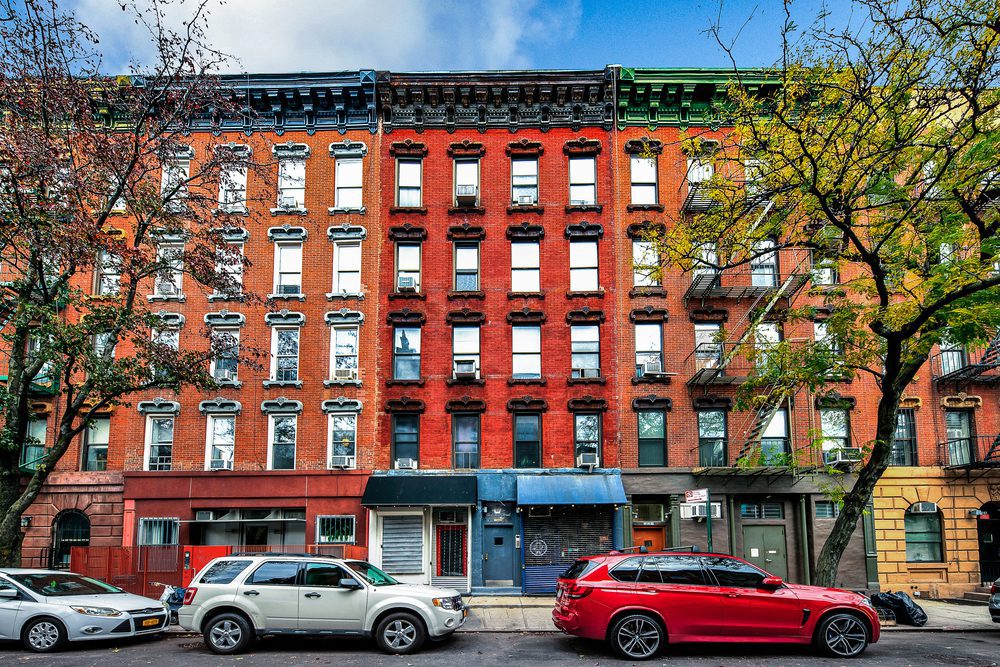In order to introduce the housing market, it is necessary to understand its relevance, and overall value. Of The total housing market value was $43 trillion in 2022, according to Zillow Analysis. It represents 27% of all household net worth in the US, and it is almost twice the size of the US GDP (US$ 23 trillion). Residential also is the largest investment for 50% of the US population, with 58% of their total household net worth. Not only is it the primary asset, but it is also the largest debt of the component; mortgage debt represents 69% of total household debt, or $11.4
trillion. Therefore, the unit level are also relevant to the overall U.S. CPI shelter is the most representative indicator, weighting by 32%. Another statistic to highlight is the current 65.5% homeownership rate of all US households. Naturally, households under 35 years old, have a much smaller percentage — or 38.1% of homeowners and 61.9% of renters and households over 65 years old, have the opposite -79,3% of homeowners and 20.7% on renters.
The residential sector can be divided in three main subsectors:
The Multifamily homes contain separate residential units within a single structure. The residential unit, here, is defined as a room or group of rooms. The unit can be adjacent either horizontally or vertically, and they typically share of the heating system, and public utilities such as water and sewage. In Apartment buildings, condominium complexes and duplexes are all considered multifamily homes. Multifamily properties are usually owned by the investors in order to rent.
The single-family home is a freestanding structure that shares a common wall with another residence. These homes tend to be occupied by the owner of the property, although a few REITs and institutions are now investing in them.
A manufactured home is a factory-built residence that can be placed on a piece of land, and costs much less than a traditional new build. The total of the rent, which includes both the land and the manufactured home, and averages between USD 700 and 900 USD, making it much more affordable compared to a single-family home or an apartment. Its construction time is also significantly shorter than that of a single-family home.
Besides those three, some of the other subsectors can be described as residentially related, such as residential vehicles, marine, residential mortgages, and a few.
Demographical Drivers
The first option-to-understand-is-demographical drives, such as working from home (WFH), migration and household formation.
WFH Impact
Since COVID-19, the world is reshaping how and where people work. Working from Home (WFH) has become a new low in the USA. Among college graduates, 16.4% work entirely from home, 41.7%, and follow a hybrid model, and 41.9% work in fully online and web-site. Before the pandemic, nearly 85% of the workers were based in the office. This significant shift has driven the people to move out of a major capital, especially toward cheaper and warmer cities.
Where are people moving to?
Net Domestic Migration
The region with the greatest positive flow of people in recent years was the Sunbelt region. In the year 2022, Florida, and Texas were the greatest examples, with more than 320.000, and to 230,000 net, with people moving in and, respectively. On the other hand, California, and New York (the state) had more than 300.000 people, the net move-out.
Household formations
The second demographic factor that influences the real estate market is household formation, which is the main indicator of the long-term demand. The American birth rate has been falling in recent decades, has been the case in most developed countries. Even so, the number of households headed by 25 to 34-year-olds grew by 300,000 per year between 2016 and 2021, which is a sharp increase compared to the average annual growth of just 45,000 households between 2011 and 2016. This difference of 260,000 additional households per year, according to the JCHS of Harvard University, and is represented with the specific movement of a reversion to the historical mean. Over the long term, slower population growth could mean that future household growth will rely more on less stable and predictable factors, such as immigration and headship rates, as well as the drivers that influence them, including the changes in incomes and housing affordability
States ' policies
Rent Control
Another important topic in the residential sector, - is-the-influence-of-state, and city regulations, such as rent controls. Some states and right, like California and New York City have adopted interventionist policies. In California, for example, statewide rent increases are currently limited to a 5% plus the change in the CPI, capped at a maximum total increase of 10%, in addition to city-specific regulations. Since COVID, these policies have gained more attention, and of the new states, such as Florida, are discussing adopting similar measures. There has even been the initial speculation about the possibility of a national rent control policy. Although most states do not have any statewide policy on this issue, rent control has already become a significant driver in the market due to its impact on two of the largest markets, California and New York City, and the fact that others are considering implementing it, as well.
Property taxes
In the fiscal year 2020, property taxes made up 32.2% of the total state and local tax collections in the United States, representing the largest source of tax revenue. At the local level, property taxes were even more significant, accounting for 72.2% of the total collection. Beyond property taxes, corporate tax rates also vary considerably across the states. California and several Northeastern states that currently have a combined federal and state corporate tax rate of close to 30%, while in Texas stands at 21 percent, and Florida at about 25%. Each of the state and the county to strike a balance between attracting new businesses and maximizing tax collection. The States in the Sunbelt, many of which have among the lowest tax burdens, we leveraged this advantage to drive business expansion—a factor that, in turn, fuels the growth in the residential real estate market.
Operating Expenses Breakdown
Jobs, Income and Savings
The Social Benefits and Personal Savings
In 2019, the total government expenditures were employed to 300 billion us dollars. After COVID, however, the US government spent a record amount on welfare and social services, including financial assistance for food, housing, and other benefits. These expenditures increased 3.4 times, reaching nearly 1 trillion USD. At the same time, the personal savings also rose by more than 1.5 times in 2020, driven by heightened uncertainty and apprehension during the pandemic.
Income and Unemployment
The American job market, reflects much of the overall economy. After the peak of the layoffs during COVID jobs returned at a rapid pace, and by the end of 2022, the unemployment rate had fallen to 3%, the lowest level since the 1970s. Income from both employment and social benefits increased the availability of money for the Americans, which meant that even with the savings grew, spending also rose.
Rents and Vacancy
The as previously mentioned, the main component of the US, the CPI (inflation index) is the future, which represents the average of the current and the equivalent rents and accounts for 32% of the total index. Historically, rents in the United States have grown by less than 4% on average. However, during COVID, the working from home became widespread, people began seeking larger spaces in areas beyond proximity to their offices, leading to increased investment in the housing. In 2021 and 2022, rents rose by more than 24%, while vacancy rates dropped to 5.6%. It is 2023, rents are expected to stabilize and return closer to the historical average growth rate.
The Rent-to-income
Even with the sharp increase in rents, the total income has helped to offset the impact on the rent-to-income ratio. On a national level, this metric is currently close to the historical average of 25 percent. This suggests that there should not be a significant short-term stress in the quality and service levels, as long as the American income continues to support it. However, it is important to note that each region has its own dynamics; for instance, New York City has one of the highest rent-to-income ratio in the country.
The Housing Market
Home sales
In this scenario, the people not only had disposable income but also benefited from historically low debt costs. The US 10-year Treasury bond was yielding below 1%, while mortgage rates were around 3%. As a result, those seeking new homes during COVID had both liquidity and favorable financing conditions of the perfect storm that is the housing market. Between 2020 and 2022, the housing prices surged by 40 per cent, mirroring the sharp increase in rents that is mentioned earlier.
Inventory
Another factor in explaining housing prices is the current inventory situation. The United States has a total housing inventory of more than 140 million units, but with a population of over 330 million people, the average occupancy is nearly 2.5 people per unit. While the number of new households continues to grow, new supply has not kept pace, leading to an estimated housing shortage of more than five million units, according to Fannie Mae.
This shortage does not appear likely to ease in the coming quarters. Before 2008, housing starts reached record levels, fueling a highly speculative and the overheated market. After the housing bubble burst, however, new supply collapsed. Since then, housing starts have gradually recovered, but in today's environment, they are beginning to cool again, even though a significant pipeline of supply, is set to be delivered soon. In particular, cities such as Phoenix, Denver, Charlotte, and los angeles are expected to see a substantial increase in the supply of 3%to 5% over the next two years—an alert sign for the Sunbelt markets.
The Pending Home Sales
In order to anticipate market movements in the few weeks ahead, a useful indicator for predicting home sales is the pending home sales index. This metric tracks signed real estate contracts for existing single-family homes, condos and co-ops that have not yet closed, making it a leading indicator for existing home sales. Data shows that in the year 2022, pending home sales, experienced the steepest declines in the last decade. The main variables driving home sales trends are the housing prices, stock availability, and the cost of financing—commonly referred to as mortgages.
Spread Mortages vs the Treasury
The variation between the 30-year mortgage rate and the 10-year Treasury yields is clear, and the mortgage rates are directly influenced by the Treasury rate, which serves as the benchmark for determining loan costs. For more than 20 years—aside from a temporary break during the 2007-2008 crisis, which resumed by 2009 for the American market, benefited from a favorable environment for new deals, largely due to the historically low cost of capital.
However, since 2021, the scenario has shifted. The lingering effects of the pandemic, combined with the temporary deglobalization pressures from the war in Ukraine, sanctions in Europe and the USA, and China's lockdown policies, have contributed to a period of global monetary tightening. In the US, inflation broke the historical records, climbing above the 7% per year, compared to the Federal Reserve''s 2% target. In response, the Fed initiated an ongoing cycle of interest rate hikes, which pushed the 10-year Treasury yield is above the 4.2%, ending the year 2022 at 3.88%.
Mortgage rates have been directly affected by this movement, though in a non-linear way, due to the residential market-specific risk factors. The spread between 30-year mortgage rates and 10-year Treasuries widened sharply, with mortgage rates rising to 7% in 2022. This represented a spread of 3.23% compared to the historical average of 1.73%—an even higher differential than in 2008.
As a result, homeowners who had locked in on mortgages below 4% are disincentivized from prepaying their loans or sell their homes, when purchasing another property that would require taking out a new mortgage at significantly higher rates. Consequently, both the home sales volume, and mortgage applications dropped sharply. According to the MBA's index, mortgage applications fell by 77% compared to the end of the year 2020.
Affordability Issue
As a conclusion to the analysis, we arrive at the concept of affordability, which measures how accessible housing is by considering the relationship between median home prices, median income, and mortgage rates—in other words, the combined effect of all the factors discussed above. The Current affordability is at its lowest level in more than 20 years, down 33% compared to the recent peak at the end of the year 2020. In summary, the volume of real estate transactions, is expected to remain low, with the limited prepayment activity, until these key indicators stabilize.
2023 vs 2008
There are several differences, and only a few similarities between the sub-prime crisis of 2008 and the current situation. The key distinction lies in the availability of income to service the debt. Although mortgage rates are currently well-above the average, the overall mortgage volume has been declining, and most existing mortgages were contracted at the lower rate of around 4%. As a result, the mortgage debt service accounts for only about 4% of people available income. This indicates that, unlike in 2008, the market today is not experiencing a period of excessive housing speculation.
Public vs Private
Before finalizing, it is important to complement the analysis with the distinction between the private and public markets, focusing specifically on Residential REITs, which are among the largest institutional homeowners in the United States. Corporations currently own approximately 10%to 15% of all U.S. homes. Within Residential REITs, the main subsectors are Apartments, Single-Family Houses, and Manufactured Homes, with Apartments being the largest segment.
At the end of 2022, REITs were trading at an implied cap rate of close to 6%, while the nominal cap rates in the private market were still below 5%. As shown in the chart, REIT cap rates tend to be far more volatile, adjusting sharply and quickly to shifts in market conditions.
In addition, there is a significant deviation from the historical average spread between the public and the private, the cap rate. The spread reached number two in standard individual deviations above the historical norm, indicating that a reversal is likely in the coming quarters. This should translate into both the catch-up movement in the private market, and an adjustment in the public market, ultimately bringing the gap between them closer in line with historical patterns.
Takeaways
-
Working from home in the US has become a structural trend, and is expected to remain a long-term practice.
-
The National migration flows toward regions, such as the Sunbelt should also continue, though at a slower pace than in recent quarters. With a significant new housing supply, expected to be delivered in key migration to cities in 2023 and 2024, the balancing, the effect should occur: prices are unlikely to rise sharply due to strong demand, but also unlikely to fall steeply thanks to the absorption of new supply.
-
The Rent levels remain supported by the average income level, even after the recent years of increases. The modest rise in average rents is expected in 2023.
-
By contrast, there is limited room for further appreciation in house prices. The more likely scenario is a decline in transaction values, primarily driven by the current high cost of capital.
-
The disruptions are expected from the long-term structural factors. The market is still adjusting to the new, real-time, but in the longer term, the growth of the American economy, rising incomes, and the persistent housing shortage will remain the key drivers of the sector''s future.






